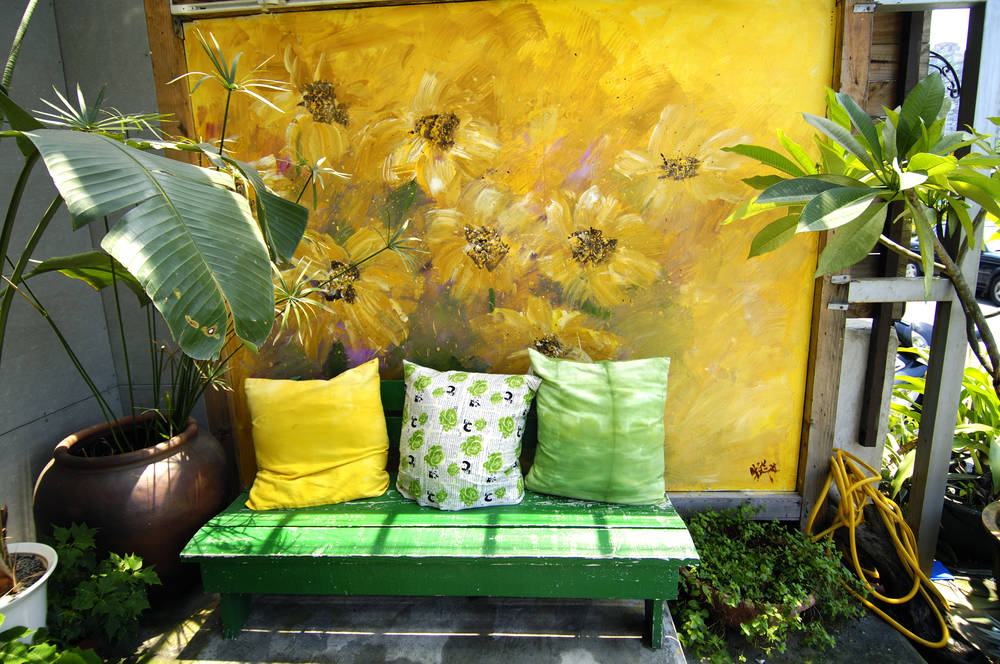Decorate Using Colour Theory
Colour Theory. Sounds a bit scary when you’re not familiar with it. Not just because it contains the word ‘theory’. But actually, when you’re deciding how you want to decorate your home, it can be your best friend. Here’s how you can use Colour Theory to create a harmonious colour scheme that shows your space and style off at its best.
The Basics of Colour Theory
First of all, if you’re not familiar with the Colour Theory Wheel, don’t panic. It’s pretty simple, as you can see above, it is just a visual representation of how colours work and blend together. There are 12 basic colours (yes 12, not just 7 like you learnt about rainbows when you were little), and this is how it breaks down: first you have the Primary colours, which, as I’m sure you know, are Blue, Yellow and Red, which can’t create from mixing other colours together; then there’s the Secondary colours, Orange, Violet and Green, which are made by mixing two primary colours together; Finally, you come to the Tertiary colours, as listed above, which are created mixing primary and secondary colours. Hue, Tint, Shade, Tone; Analogous, Complementary, Split Complementary;
Things to Bear in Mind
Firstly, if you want to use variations on a particular colour you love, use Neutrals! This is where you add white, gray or black to lighten or darken your colour and it works like this: add white to a colour to create a new Tint; add black to a colour to create a new Shade; add gray, which will slightly darken your colour and create a new Tone. Secondly, think about colour temperatures. Yes, that’s right, colours have temperatures! Reds, Yellows and Oranges are considered warm colours, which are great for brightening up larger rooms and adding a touch of intimacy to the space, while Blues, Greens and Purples are generally considered cool colours, the creating a more relaxing feel, but are better for smaller spaces as they can feel a bit stark in bigger rooms.
Colour Schemes
The various combinations of these colours from around the Colour Wheel is what will create your Colour Scheme. So what are they?
- Monochrome – Generally thought of as being a black and white colour scheme in interior design, but actually in these terms, it means using just one colour, in its various Tints, Shades and Tones.
- Analogous – This is where you use three colours that sit in a row on the colour wheel, for example Red, Red Violet and Violet.
- Complementary and Split Complementary – A Complementary colour scheme is where you choose two colours that sit directly opposite each other on the Colour Wheel, which is a nice way of keeping things fairly simple but pretty bold; Alternatively, Split-Complementary is a little bit safer, where you pick a base colour and then look at the colour directly opposite and use the two colours that are sitting either side of it, which will calm things down a little, but can still provide some nice pops of colour with accents.
- Triadic, Tetradic, Square Colour Schemes – This is where you start to combine more colours. Triadic is simply a triangle of colours, the three primary colours being a perfect example of a Triadic combination; Tetradic is where it starts getting more complicated, but bear with me! It uses four colours, that are chosen using sort of a rectangular shape, with two pairs from opposing sides of the colour wheel, with a one colour gap between each colour in the pairs (see above); A Square Colour Scheme works in a similar fashion, but with the colours being more evenly spaced, creating a square shape (hence the name!), so for example Yellow, Blue Green, Violet and Red Orange.
Now, how to use these different schemes throughout your home?
Best Colour Schemes by Room
Different rooms, and their different functions, can naturally suit some colour schemes better than others, but always be sure to take into account the size of the room and, naturally, your own taste!
- Bathroom’s tend to look great with an analogous scheme, work with different tones and shades and be sure to use your neutrals here! You’ll likely want to keep things fairly simple in the bedroom, so go for analogous or split-complementary to create a relaxing atmosphere that’s conducive to sleep.
- Kitchen’s look great with a split complementary scheme, allowing you to introduce some great accent colours without overwhelming the space.
- Living room’s can work well with either a complementary, triadic, tetradic scheme for something that’s bold and bright, or, if you prefer something calmer, go for analogous colours that blend together for soothing look.
- Dining Room’s are a great place to make a statement, so again, triadic and tetradic schemes are great here, introducing a range of colours to the space.
- Finally, for you Office/Study space, if you want it calm and not overwhelming for serious, focused work, go for a simple analogous or split-complementary scheme, but if you’re looking to be creative and derive inspiration from your workspace, be adventurous with a complementary or tetradic look, with colourful pops of fun spread around the room.
Post Written by Julie Fisher





